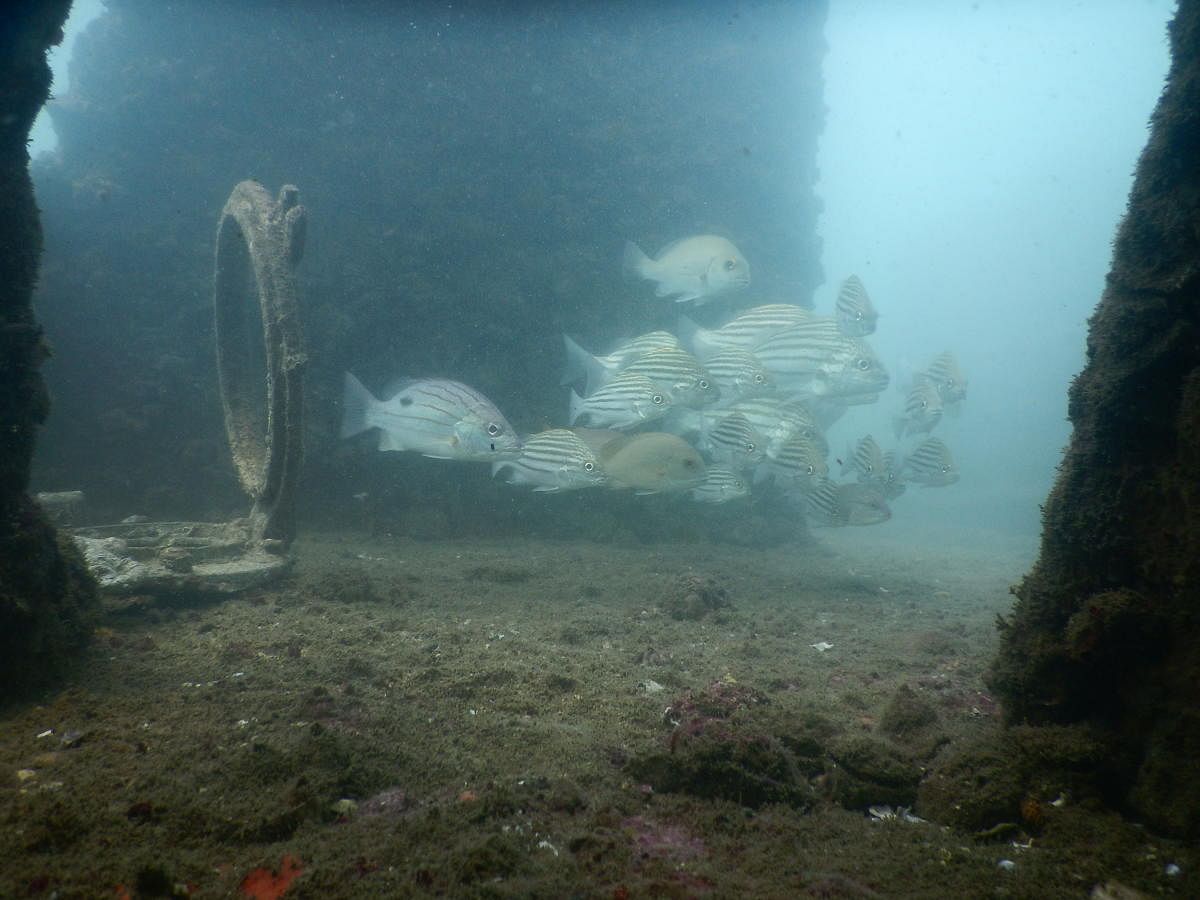
On a balmy evening, I visited a dive shop in Candolim, a bustling coastal village in North Goa. Christian, a young twenty-something American, greeted me with a beaming smile and introduced himself as my dive instructor. I tried my dive suit and finalised my gear in preparation for our dives the following day. Christian filled me in on the plan of action and hinted at the possibility of diving at a shipwreck.
Turning back time
Goa has had an illustrious maritime past. The earliest shipwreck near Goa was referenced to be a sunken ship belonging to King Guhalladeva I around the 11th century. During the 18th and 19th centuries, sea trade in Goa flourished under Portuguese rule, which denotes the possibility of many capsized vessels from the colonial era lying silently beneath the surface of the sea. According to the National Institute of Oceanography, the oldest Portuguese wreck in India settled off the Sunchi Reef near Goa’s Mormugao harbour. More recently, in 2016, the wreckage of a Pakistani trawler was found in the Zuari River — the largest river in the state that meets the Arabian Sea. Most of the shipwrecks remain out of bounds, but two are in diveable range and accessible for recreational diving in Goa.
Sank without a trace, or not?
On the morning of our dive, I reached Nerul, a sleepy hamlet along the Mandovi River in North Goa. Here I was joined by Christian, three more male dive instructors, and my diving buddy, a young German woman. We exchanged pleasantries and continued on a 45-minute boat ride to Ilha Grande, an island off the Arabian coast near Vasco which was the base for our diving pursuits.
Our first dive was to a site called Suzy’s Wreck, also known as SS Rita. She was a sunken ship southwest of Ilha Grande that capsized sometime in the 1950s while carrying railroad tracks. We surveyed the waters, completed our safety checks, and back-rolled one-by-one into the sea. After a final deep breath, we deflated the buoyancy control device and descended to a depth of about 11m. The first couple
of minutes went by in maintaining the right buoyancy underwater. But as we reached the seafloor, I became at ease and delightfully observant of the small groups of Moorish Idols and Angelfish gracefully swimming near me.
We lingered around the periphery of SS Rita, and I was awe-struck by the way the ship had aged after spending half a century underwater. A 100 feet metal wreck remained of the oceanic ruin that was covered with mollusks and fan corals. Much of the vessel had turned into a town colonised by fishes such as Nudibranch, Scorpionfish, goatfish, Polyclad flatworms, stingrays, batfish, snappers, and sweet lips. I found Zen marvelling at all the sights of the sea in silence, able to hear nothing but the sound of my breathing.
Grave of the lost at sea
For our second dive, we headed 20 minutes south of the SS Rita wreckage to a site named Davy Jones’ Locker. Many believe that the metallic remains at Davy Jones’ Locker are the stern of SS Rita that broke and settled 600 meters away.
According to sea legends, Davy Jones’ Locker is a euphemism for a grave of drowned sailors and shipwrecks in the depths of the ocean. In popular culture, Davy Jones is also referenced in the celebrated Disney franchise Pirates of the Caribbean featuring a character of a ghostly captain sending people to the locker under the sea. Due to its moderate water currents and low visibility, Goa’s Davy Jones’ Locker is mostly reserved for experienced divers. Barely six dives old, I tread cautiously under the watchful eye of my instructor, as we descended into the void holding on to a rope while navigating currents. The sight of blackness loomed as we inched closer to a ghostly ruin in the seabed. We hovered around the fallen decks at about 14 meters and spotted an incredible fish life of resident groupers, barracudas, and damselfish taking refuge here. There was a huge propeller, still intact, and beneath it were schools of tuna, parrotfish, and wrasse living in unison. Forty minutes into our dive, we finally ascended through the rope towards the sun. It was strange to believe that the deep blue abyss with mysterious ruins and beautiful sea creatures and the shore we had just returned to were part of the same world.
That evening, I walked into a shack and treated myself and celebrated a day of great dives. As I sat by the sea and watched waves crash onto the rocks, it sank in that Goa holds many untold stories, if only one is willing to ‘dive’ into its past.
The experts
A couple of dive shops in Goa offer diving courses for beginners, as well as fun dives for experienced divers. Scuba Evolution India is one such PADI 5Star and Instructor Development Dive Resort in Candolim, North Goa (www.scubaevolutionindia.com).
Cost
Certified diving courses begin from 18000 INR, while fun dives begin at 5800 INR.
Best time
The dive season in Goa begins from October until May.